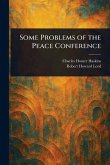This monograph investigates the hypothesis that increases in U.S. military responsibilities in geographic regions (with limited resources)--or geo-environmental changes--lead to an increase in operational risk. It does so by analyzing two historical and one contemporary case study. The two historical case studies examine increases in U.S. military responsibilities in regions dominated by oceans, seas, and littoral regions--specifically, the Asia-Pacific region after the United States acquired the Philippines from Spain in 1898, and the Indian Ocean region in the 1950s to the 1980s after the United Kingdom began retrenching. The lessons and understanding gained from these cases studies is then applied to a case study examining the Arctic today. The monograph analyzes these increases in U.S. military responsibility through five variables: Doctrine, Organization, Technology, Threat, and Facilities, to determine their overall effect on operational risk. The conclusion is that the facilities variable is the most important to consider in addressing operational risk incurred through geo-environmental change. This work has been selected by scholars as being culturally important, and is part of the knowledge base of civilization as we know it. This work was reproduced from the original artifact, and remains as true to the original work as possible. Therefore, you will see the original copyright references, library stamps (as most of these works have been housed in our most important libraries around the world), and other notations in the work. This work is in the public domain in the United States of America, and possibly other nations. Within the United States, you may freely copy and distribute this work, as no entity (individual or corporate) has a copyright on the body of the work. As a reproduction of a historical artifact, this work may contain missing or blurred pages, poor pictures, errant marks, etc. Scholars believe, and we concur, that this work is important enough to be preserved, reproduced, and made generally available to the public. We appreciate your support of the preservation process, and thank you for being an important part of keeping this knowledge alive and relevant.
Bitte wählen Sie Ihr Anliegen aus.
Rechnungen
Retourenschein anfordern
Bestellstatus
Storno








